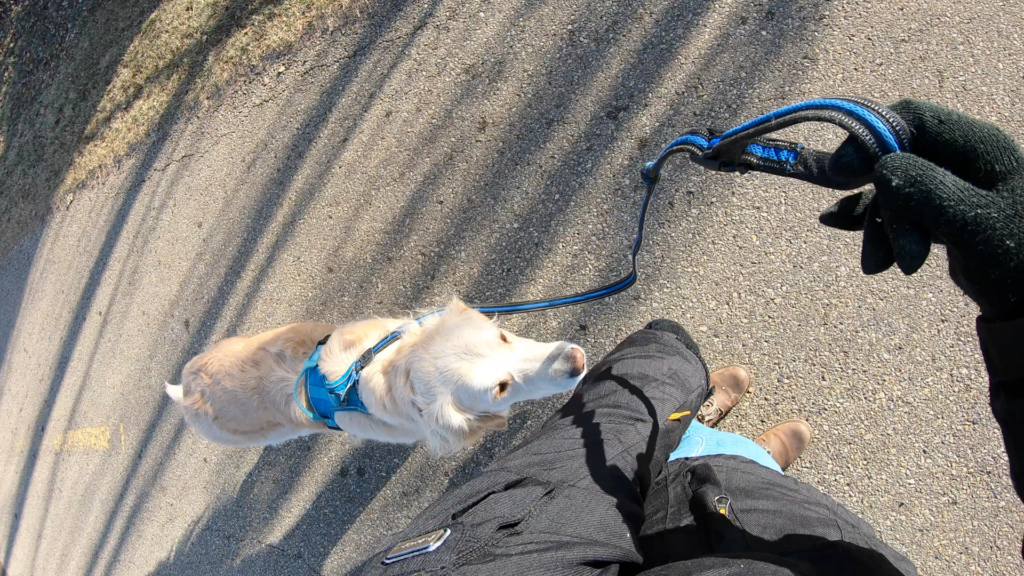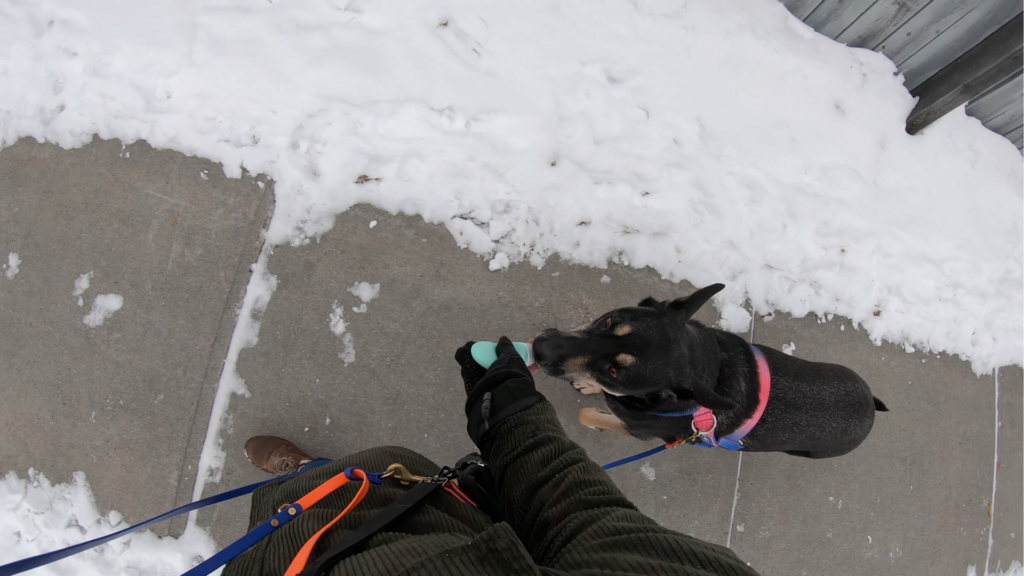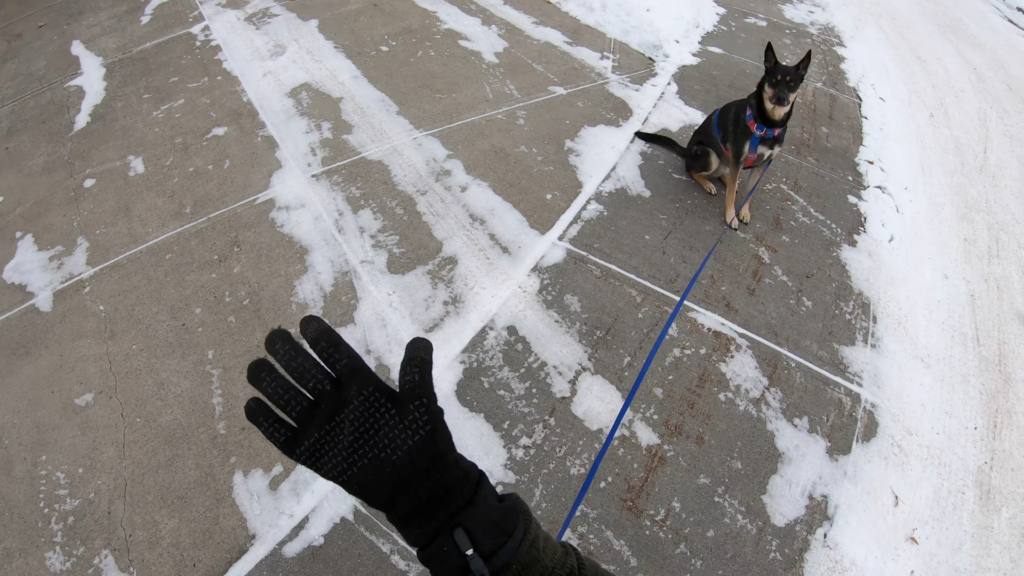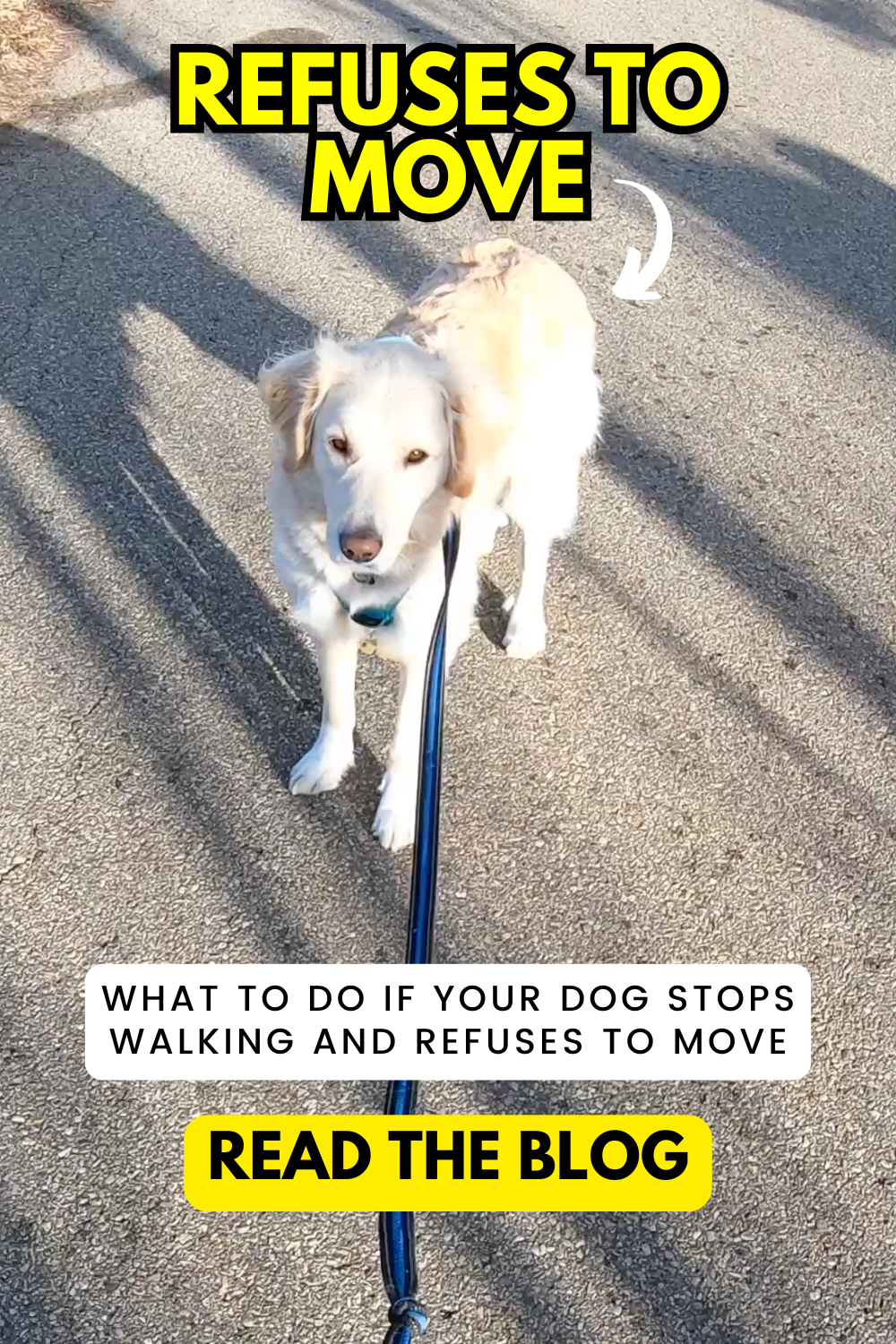Training Your Dog to Walk Without Stalling: A Step-by-Step Approach
On my Youtube channel I regularly share tutorials for solving pulling on leash, but today I’m focusing on a different issue: if the dogs stops walking and refuses to move.
In this post, I’ll walk you through the step-by-step, reward-based method I use to solve stalling on leash. I’ll also share two common mistakes that should be avoided!
A video tutorial of these training steps is linked here if you learn better by watching:
Before You Start Training: Rule Out Pain or Fear
Before diving into training, there are two things to rule out:
- Is your dog in pain?
Pain or discomfort can be a huge reason why dogs refuse to walk. If your dog hasn’t had a recent vet check-up, it’s always worth starting there to ensure there’s not a physical reason for the stalling behaviour. - Is your dog scared of something during walks?
Fear can also cause a dog to freeze or stop moving. For example, does your dog have a fear of loud noises and you’re trying to walk towards an area with a lot of traffic? If your dog’s refusal to walk stems from fear, focus on counter-conditioning (gradually desensitizing your dog to the fearful stimulus) first. I’ll link a sound conditioning tutorial here.
Once you’ve ruled out pain and fear, you’re ready to start the training process! Here’s what to do if your dog stops walking and REFUSES to move.

The Key Concept: What Gets Rewarded Gets Repeated
A core principle in dog training is that what gets rewarded, gets repeated. So, if we unintentionally reward the stalling behaviour, our dogs are more likely to repeat it. The first training mistake to avoid is over-encouraging or making a big fuss when your dog stalls. Doing so can inadvertently reinforce the behaviour of stopping.
Instead, let’s focus on rewarding the behaviour we want, which is walking. Here’s how to do that:
Step 1: Luring Without a Cue
The first step is to lure your dog into walking without using any verbal cues. When your dog stalls, don’t try to encourage them verbally. Instead, walk to the end of the leash, creating distance between you and your dog. Hold a treat between your fingers so your dog sees it, and then turn your back to them. Lower the treat to their head height, and use the treat to guide them into motion.

At first, you may have to wait a while for your dog to start moving toward you. With repetition though, they’ll start moving faster and faster. As soon as they begin to approach you, start walking slowly which allows you to reward in motion. That part is crucial: by rewarding them when they’re in motion, we’re reinforcing walking, not stalling.
With each repetition, gradually increase the amount of time your dog must walk next to you before receiving the reward. This helps disconnect the reward from the stalling behaviour.
Step 2: Adding a Verbal Cue
Once your dog starts following the treat lure quickly, it’s time to add a verbal cue such as “let’s go!” As you lure them with the treat, say the cue. With enough practice, your dog will start to associate that verbal cue with the desired action of walking.
Same as Step 1, make sure that the reward is given in motion as they walk next to you.

(If you’re training in winter, it can be hard to reward your dog without freezing your hands. Read my tips for that HERE)
Step 3: Phasing Out the Treat Lure
It’s crucial to phase out the treat lure as quickly as possible. If you continue luring your dog for too long, they might only respond when they see the treat. You should aim to stop showing the treat lure and only use your verbal cue within a few training walks!

Now, when your dog stalls, simply say “let’s go” without showing the treat. When they start moving towards you, mark and reward in motion.
At this point, the treat isn’t a bribe anymore. Instead, it’s a reward for completing the desired action!
Make sure you Reinforce Walking Behaviour
Remember: what gets rewarded gets repeated. To build a solid habit of walking without stalling, you need to reward your dog heavily when they’re simply walking beside you. This helps them understand that staying in motion is the behaviour that earns rewards. For at least a week, make sure to reward your dog for walking alongside you during moments when they haven’t stalled.
Final Thoughts
Training a dog who refuses to walk takes patience and consistency. I’ve had great success with this approach, and I hope you do too.
Happy training, I’ll see you in the next blog post!
Disclosure: Happy Hounds uses affiliate links. Purchasing with these links will not cost you any extra, but I get commissions for purchases made through these links. Affiliate links help me to continue to offer free resources & blog posts. I would love if you used them!

+ show Comments
- Hide Comments
add a comment